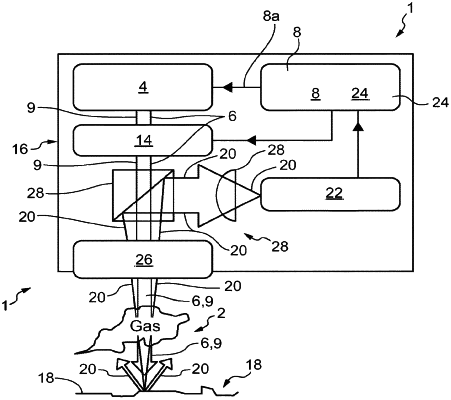| CPC G01N 21/39 (2013.01) [G01N 21/3504 (2013.01); G01S 7/4861 (2013.01); G01S 17/88 (2013.01); G01N 2021/394 (2013.01); G01N 2021/399 (2013.01)] | 24 Claims |

|
1. A method of operating an optical device, the method comprising:
tuning a first emission wavelength of a first output radiation of a diode laser continuously within a first wavelength spectrum by modulating a drive current thereof with a first drive current modulation having a frequency of at least 100 kHz, the first wavelength spectrum comprising a first spectral feature associated with at least part of a gas absorption spectrum of at least one gas;
modulating the first output radiation of the diode laser with a first output modulation, the first output modulation comprising a first plurality of binary pulses;
scanning the first wavelength spectrum at a rate of at least 1 μm per second;
transmitting the modulated first output radiation of the diode laser through optical guide elements in a three-dimensional scan towards a first target area;
receiving scattered diode laser radiation from the first target area and directing it to a detector using at least one of said optical guide elements;
processing the received scattered diode laser radiation by correlating the received scattered diode laser radiation with the transmitted first output radiation to create one or more correlated data sets; and
forming an area scan of locations in the first target area to determine concentration of the at least one gas between the optical device and the locations,
wherein multiple correlated data sets corresponding to fixed spatial points are used for determining concentration of the gas for each of the locations.
|